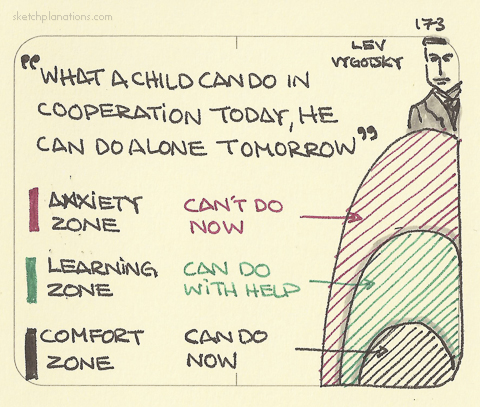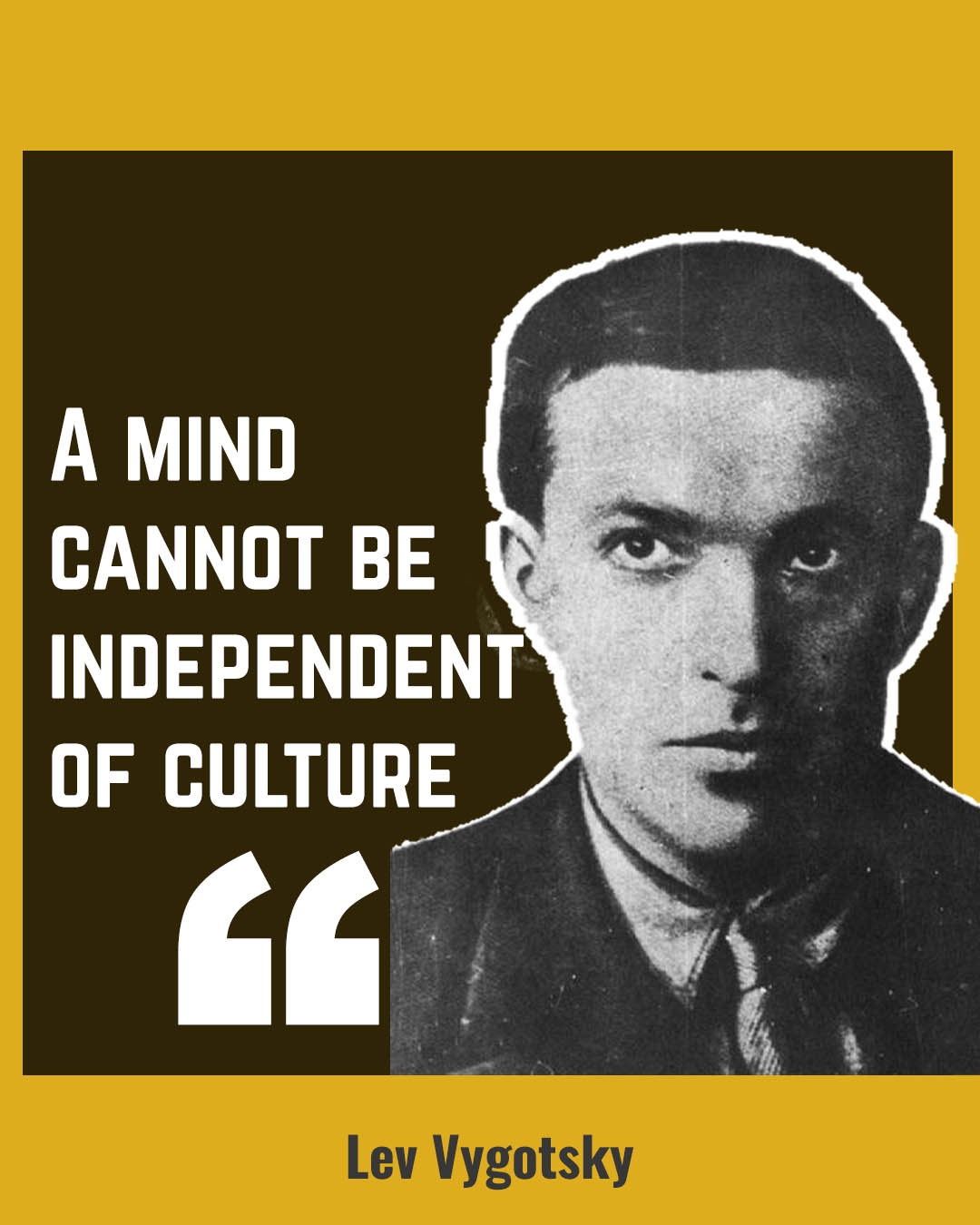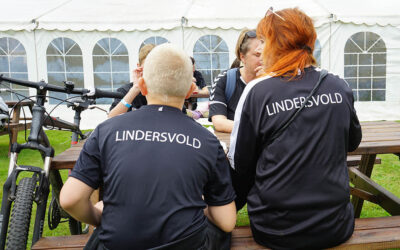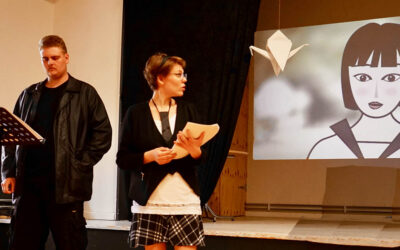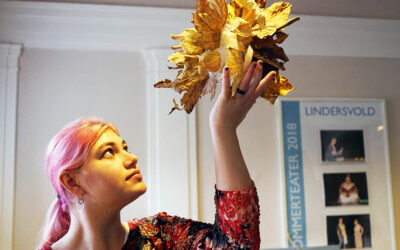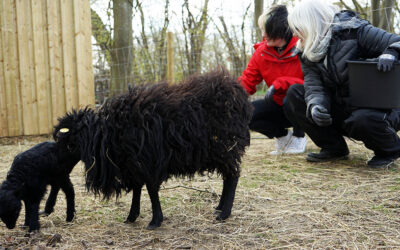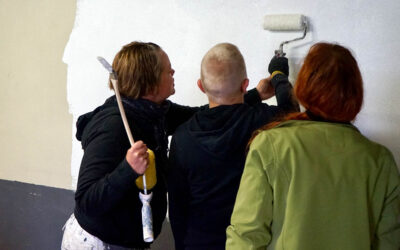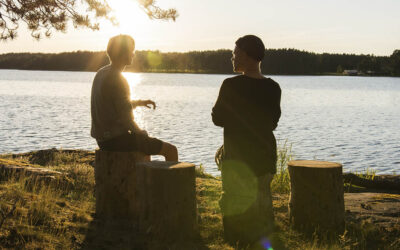



How the “Zone of Proximal Development” works in practice
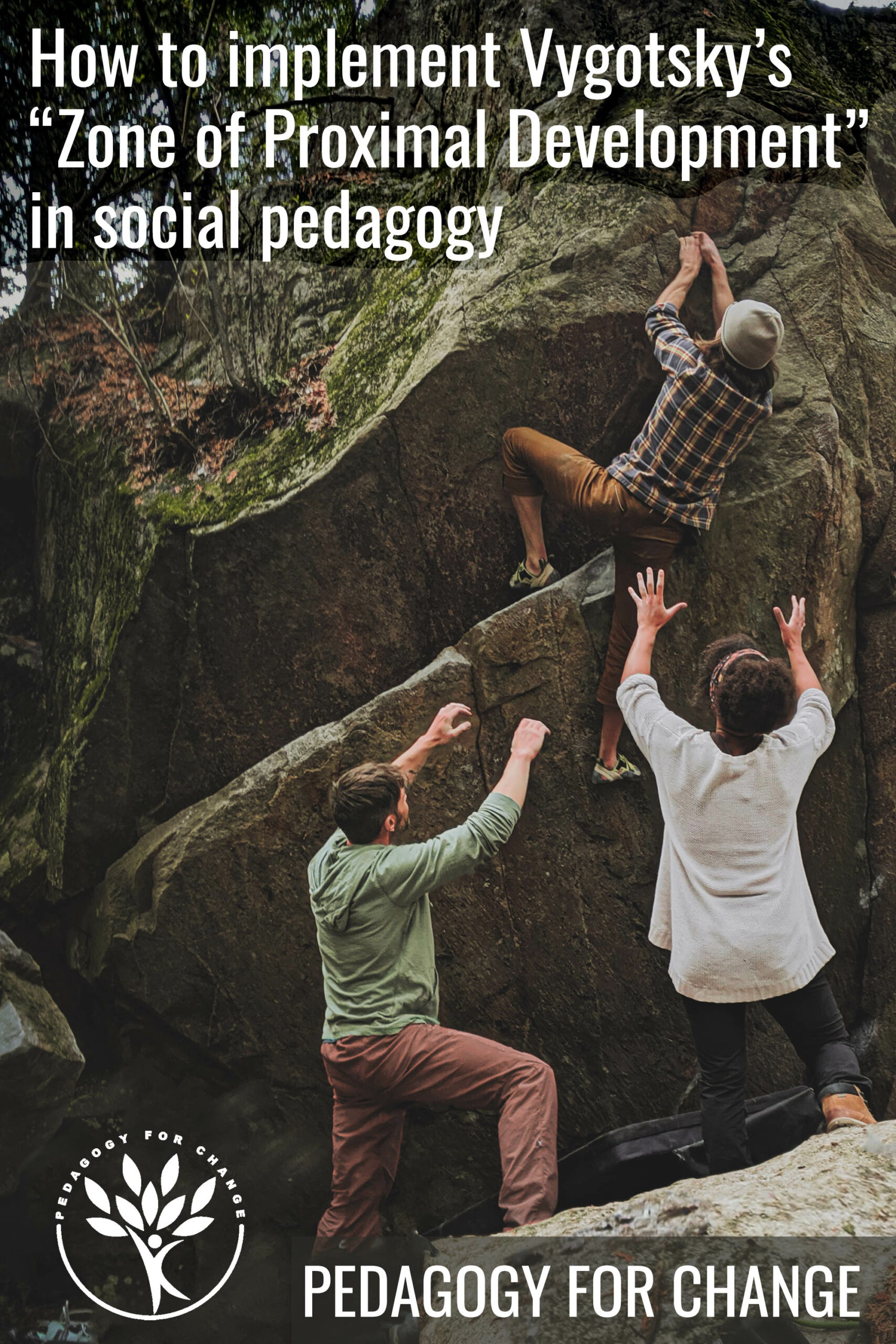
In traditional educational settings, there is often an obsession with what young people can – or cannot – do. This is also true for the worlds of social pedagogy and care work. There is an abundance of tests, assessments, and observations to determine a young person’s level of knowledge and skills.
However, the youngsters’ invisible interests, potentials, and development opportunities are often overlooked when using this practice. And why is this? Well, it’s quite simple: Unseen potential is difficult to measure. So, in a culture where there is a lot of focus on progress and tangible results – latent skills and talents can remain undiscovered.
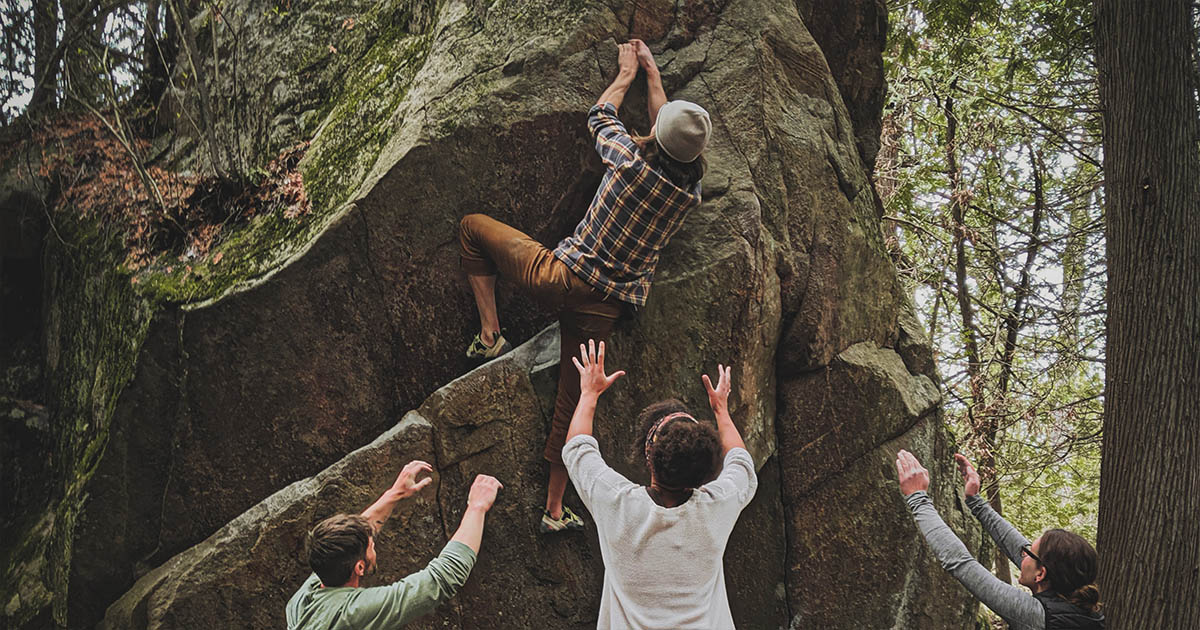
Discover and support potential skills
Russian psychologist Lev Vygotsky was interested in not-yet-developed skills, which are waiting to be learned. Practitioners of social pedagogy have a special task in this connection. They need to work consciously to discover potential skills and be ready to assist, support and encourage the young person to overcome barriers such as low self-esteem or lack of success so they dare to explore this, for them, unchartered territory – out of their comfort zone.
The aim is that the young person, step by step, with a lot of support in the beginning, gradually works towards managing the task on their own.
Read more about Lev Vygotsky’s theories, including the “Zone of Proximal Development” concept.
This process of new learning can be planned, as in “after the summer holidays you will need to take the bus on your own to school – let’s practice it, together, now”, or it can be spontaneous when the trained social pedagogue spots an opportunity for development. In the following we will share a Zone of Proximal Development example from our social pedagogy practice.
A “Zone of Proximal Development” example
At a care home for looked-after young people, the young men take turns in cooking dinner, together with a social pedagogue. A newcomer says he doesn’t want to cook because it’s “women’s work”. Using their experience from their practice of social pedagogy, and through conversations and interaction with the young man, the pedagogues finally make a discovery:
This 16-year-old has never cooked a meal in his life. He is terrified at the prospect of failure and uses the excuse of calling it “women’s work” as a coping strategy. He hopes that the demand to him – that he takes his turn in cooking dinner – will be dropped. If so, he has avoided placing himself in a vulnerable position where he could risk ridicule.

Starting with what we already know
Further investigation reveals that the young man does know how to wash up, and how to set a table. This allows the pedagogues to teach the boy something new, using Vygotsky’s principles: An agreement is made with the young man: he will set the table while the pedagogue cooks.
After some time with this arrangement, the pedagogue introduces a new element: peeling potatoes. By now, the young man has seen it being done a few times and agrees to give it a go. The pedagogue shows him how to, and they do it together. He discovers that it is not that difficult, and encouraged by this success, he soon takes on the task alone, without assistance.
After some time, the young man has mastered the skill of peeling potatoes, and this task now belongs to his comfort zone. Now, he is ready to take on new challenges.
While he is peeling potatoes with increasing confidence, he watches the pedagogue make a salad and prepare fish. Little by little the young man also learns these skills, by being in the proximity of his comfort zone, and encouraged by the interaction with the people around him.

Learning new skills and self-confidence go hand in hand
Over time, the young man develops the ability to cook several types of meals on his own, which is an important life skill. On top of this, he has also acquired self-confidence and important social skills such as taking pride in serving a good meal for his peers and asking for help when he is uncertain about something.
In the “Zone of Proximal Development” example above, the young man has been supported by a social pedagogue who has built up a sufficient and sustainable social relationship with him. In other words, the young man has been assisted by “a more knowledgeable other”, as Vygotsky calls it, and nudged from his current developmental zone – his comfort zone – to the proximal zone of development, the zone where he is receiving encouragement and hands-on guidance at an adequate pace. Now, with the acquired skill of confidently peeling potatoes, he is ready to take on new challenges.
Read more about Lev Vygotsky’s work.

”Vygotskian psychology provides a deeper understanding of the social basis of human nature and psychology—that human needs and aspirations are satisfied in collaboration with others, and that “human” development is impossible outside of human society. Emancipation from slavery, oppression, and exploitation has always necessitated mass, collaborative, social struggle. For this reason, Vygotsky ruthlessly critiqued the dominant international schools of psychology for neglecting human development’s dynamic social, cultural, and historical bases. In the wake of the Russian Revolution, Vygotsky and his colleagues dedicated their lives to developing psychology built on these very foundations. Vygotsky’s approach is often called sociohistorical or cultural-historical psychology to indicate these origins.”
Mini-Manual for New Learning
When a young person says that they don’t want to participate in an activity “because it’s boring”, or come up with other reasons to avoid the activity, practitioners of social pedagogy need to see beyond these statements, and ask ourselves: What is really going on here?
What are they trying to cover up? What is the real reason?
Step one:
Build trust with the young person. Be authentic. Be yourself. Show and share your humanity.
Step two:
Figure out what the real reason for their avoidance behaviour is. Be curious. Be open-minded. Listen. Show sympathy and respect.
Step three:
Identify where the young person’s comfort zone is. That’s where you start.
Like Danish philosopher Søren Kierkegaard said:
“If you want to move a person, you have to start from where they are.”
Step four:
Identify suitable activities within “the Zone of Proximal Development” – and make them happen. Provide adequate support!
Step five:
As new learning becomes solidified and the comfort zone expanded, new targets within the ZDP can be set.
Step six:
Repeat.
What is Pedagogy for Change?
The Pedagogy for Change programme offers 12 months of training and experiencing the power of pedagogy – while you put your skills and solidarity into action.
Studies and hands-on training takes place in Denmark, where you will work with children and youth at specialised social education facilities or schools with a non-traditional approach to teaching and learning.
In short:
• 10 months’ studies and hands-on training in Denmark, working with children and youth at specialised social education facilities or schools. At the same time yo will study the world of pedagogy with your team – a group of like-minded people. You will meet up for study days every month.
• 2 months of exploring the reality of communities in Scandinavia / Europe, depending on what is possible – pandemic conditions permitting. You will travel by bike, bus or perhaps on foot or sailing.

MORE ABOUT SOCIAL PEDAGOGY
Social Pedagogy in Denmark
Scandinavian social pedagogy is known for its holistic practice which combines “head, heart and hands” – theory, empathy, and practice. A core value is respecting the individual’s rights.
Learning through theatre
Theatre is an important pedagogical tool which provides an opportunity for us to explore realms and realities outside of the classroom, without having to travel.
Artful expression in pedagogy
Art is a pedagogical tool which provides an opportunity for everyone to work with open-ended solutions rather than striving for conventional error-free essays or science reports.
The Common Third
Creating an authentic learning space through a truly interesting, shared activity, is highly beneficial. The Common Third works as an ‘equaliser’ and is an important pedagogical tool.
Social learning in practice
We are social beings and therefore learning is an intrinsically social process. Learning takes place in many kinds of arenas, some of them arranged, where we interact with others in different contexts.
Inclusive Communication: 10 tips
Inclusive communication means sharing information in a way that everybody can understand for example people on the autism spectrum who need clearness and unambiguity.


